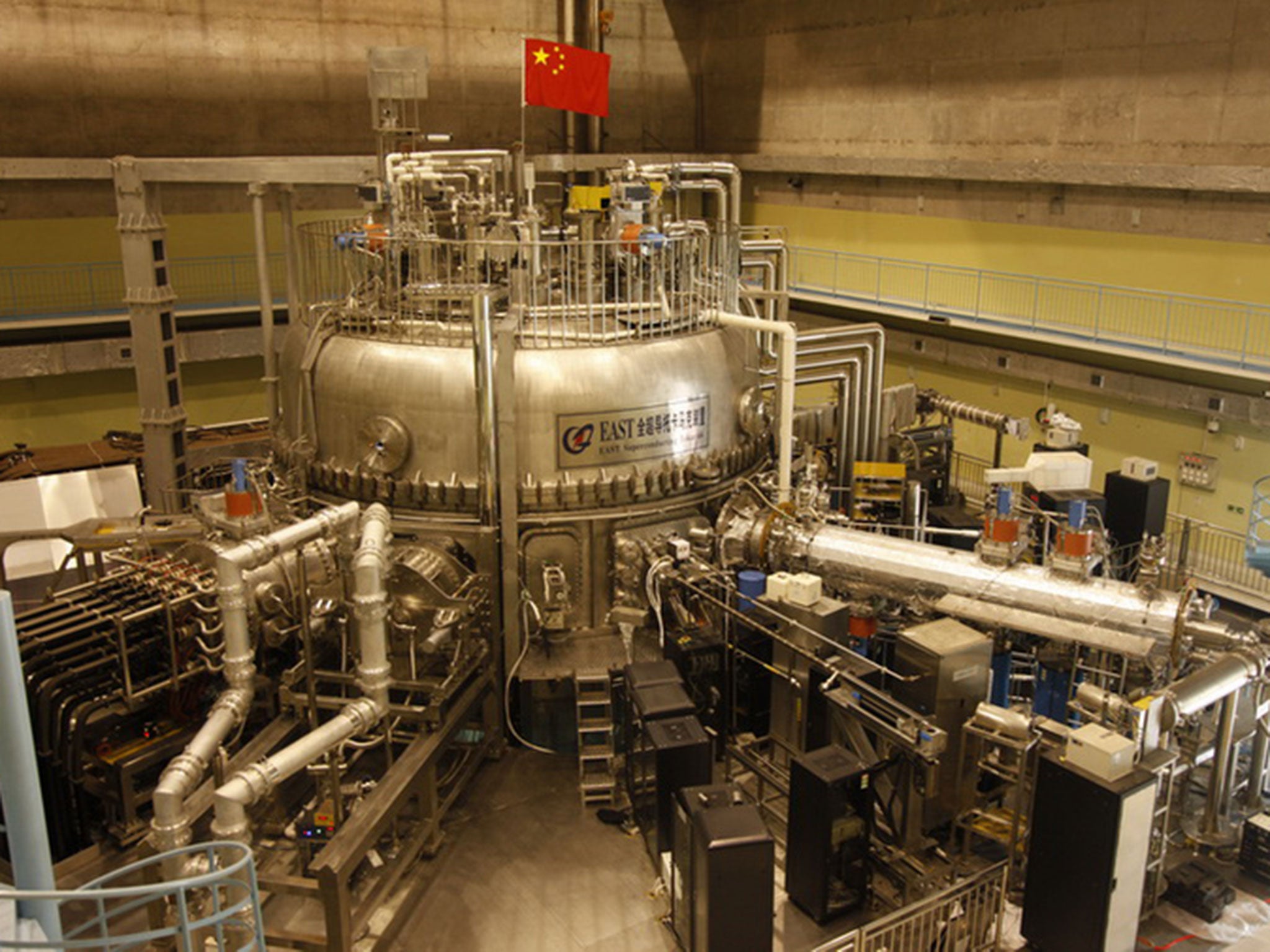Chinese nuclear fusion scientists achieve temperatures three times hotter than the sun
The temperatures were roughly equal to a 'mid-sized thermo-nuclear explosion'

A nuclear reactor in China has created plasma at a temperature of 50 million Kelvins (49.999 million degrees Celsius or 90 million Fahrenheit) for 102 seconds.
The temperature is thought to be three times hotter than the core of the sun or “roughly the same as a mid-sized thermo-nuclear explosion,” according to the South China Morning Post.
The experiment was done in a machine called the Experimental Advanced Superconducting Tokamak (EAST).
It happened last week at the Institute of Plasma Physics at the Chinese Academy of Sciences in Jiangsu province.
The research team had aimed to maintain a plasma of 100 million Kelvins for over 1,000 seconds, nearly 17 minutes.
However, the length of time that the plasma was sustained and controlled remains significant, as this is one of the main obstacles to implementing nuclear fusion more widely.

Despite the extreme temperatures reached during the experiment, there have been other plasmas produced which have been much higher in different types of machines. However, other super-hot plasmas have not been maintained for as long, largely due to their volatile temperatures and the consequent safety considerations.
The plasma being created is a super-hot gas formed from heating atoms in the magnetic EAST device.
While the technology - in which the atoms fuse at extremely high temperatures to release large amounts of energy - is many decades from being perfected, its proponents believe that it could eventually replace fossil fuels and conventional nuclear fission reactors.
Nuclear fission is different from nuclear fusion in that is the splitting of atoms rather than joining them together.
There is an on-going scientific effort worldwide to increase knowledge of nuclear fusion.
The EAST experiment follows the successful testing of the German Wendelstein 7-X stellarator fusion reactor earlier this month. The machine successfully created plasma through nuclear fusion, but only for under a second.
In France, construction is underway to build an international research reactor known as ITER. The website for the project boasts that it will be the world’s largest ‘tokamak’ style magnetic fusion device, and that it will be the first fusion device to maintain fusion for long periods of time.
Join our commenting forum
Join thought-provoking conversations, follow other Independent readers and see their replies
Comments
Bookmark popover
Removed from bookmarks